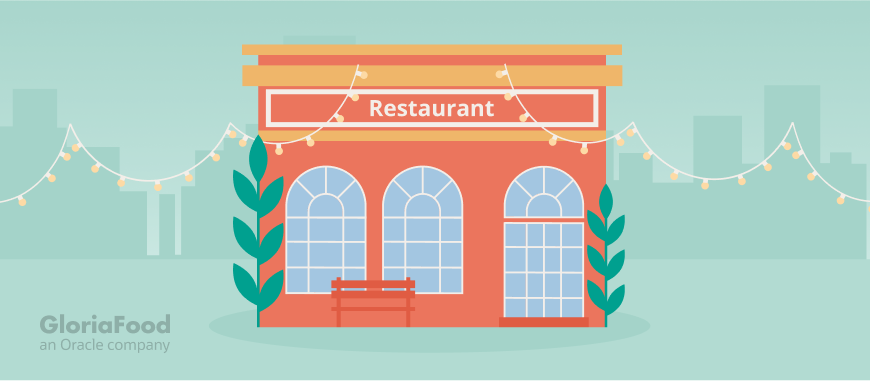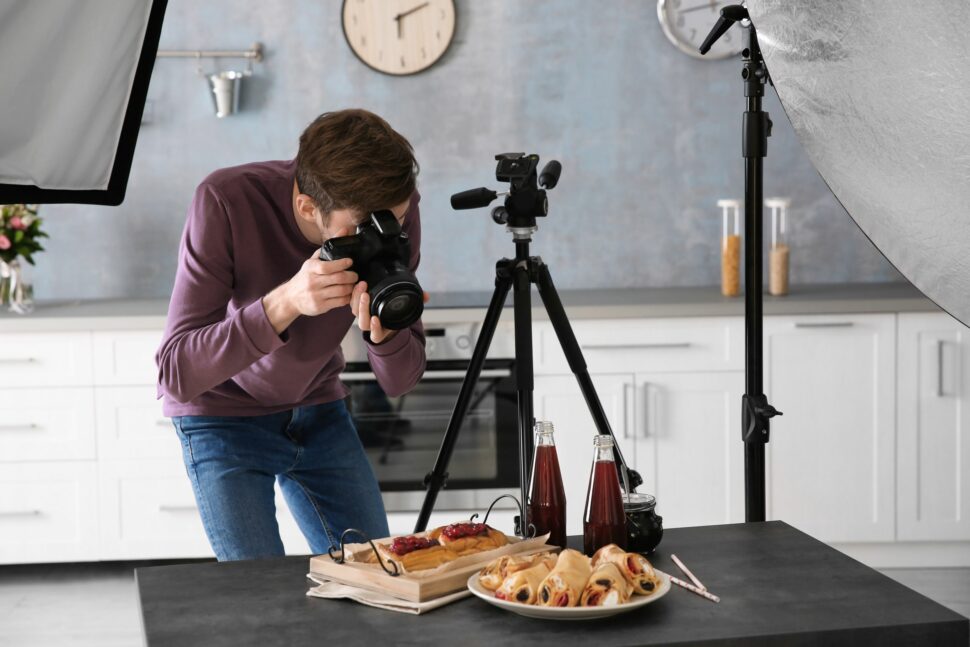- 1.Go Digital
- 2.Invest in High-Quality Food Photos
- 3.Share Everything You Do with Your Customers
- 4.Create an Email List
- 5.Reward Your Followers
- 6.Start Loyalty Programs
- 7.Join Community Events
- 8.Promote User-Generated Content
- 9.Take Advantage of the Power of Online Reviews
- 10.Use Influencer Marketing
Learning how to market a new restaurant can be overwhelming without the right action plan. From out-of-towners to regulars, customers are the bedrock of any restaurant business. Having a restaurant with an empty dining area is more than enough to keep you awake at night.
That’s why marketing your new restaurant is critical. Not only does it allow you to expand your customer base, but it also helps you retain your existing customers. This article discusses ten bulletproof tips that will allow you to level up your restaurant marketing game. So, let’s dive into it.
What is Restaurant Marketing?
Restaurant marketing is the practice of promoting your food and services to your target audience to win their business. Bear in mind that there isn’t any single way of achieving this. Instead, you need to follow a sequence of actions using multiple platforms to reach your target audience holistically.
How to Market a New Restaurant: 10 Restaurant Marketing Tips
We live in a digital world, and you need to seize the benefits that information technology brings to restaurant marketing. Consider following the tips below to bring in a crowd to your recently opened restaurant.
1. Go Digital
Nowadays, it’s critical to have a mobile-friendly, eye-appealing, and functional website for your restaurant, whether you want to target online customers or not.
That’s because 94% of customers choose a restaurant based on online reviews. A website will allow you to showcase your food in the best possible way, and you’ll have a digital home for your special announcements and menus.
If you’d like to also start taking orders on your restaurant website, take a look at the video below for step-by-step instructions.
Claim Important Accounts
After setting up a website, you’ll need to manage your local SEO (Search Engine Optimization). For that, you need to create your restaurant’s account on Yelp, Bing, and, most importantly, Google My Business.
On these accounts, you’ll need to upload your restaurant’s name, address, contact information, images, accepted forms of payments, delivery options, hours of operation, and so on. It’s one of the best ways to inform hungry customers of what they want to know.
Read more: Complete Guide to Yelp Restaurant Marketing: How to Get Ahead of the Competition
Don’t Forget About Social Media
Another critical aspect of going digital is to embrace social media. You’ll need to be active on the most important social media platforms like Instagram, Facebook, and Twitter.
These platforms allow you to increase your following and create healthy and long-lasting relationships with your customers. You can also use these platforms, especially Facebook, to find valuable insights about your customers.
Using a Facebook analytics report template to create custom reports and find key data about your customers can help you give them what they expect.
Pro Tip: Use analytics tools such as Google Analytics to find your target audience and save time and marketing budget.
2. Invest in High-Quality Food Photos
High-quality mouthwatering photos are the bread and butter of your restaurant marketing. Don’t skimp in this area because you want to show the best of what you offer. Make sure that each photo looks delicious. Otherwise, you won’t be able to draw hungry eyes and drive the engagement you seek.
Consider hiring a professional photographer who knows a thing or two about food photography. Then, use your website and social media platforms, especially Instagram, to post photos.
Remember that you’ll need to continuously upload new content to keep your customers engaged because it’s not a “set it and forget it” scheme.
3. Share Everything You Do with Your Customers
While running a restaurant business, you’re constantly on the move to reach success. Monitor your daily activities and share peak moments on social media to build excitement and attract more customers.
The excitement of your following will attract other people to look into your menu. In short, use everything you can to build hype.
4. Create an Email List
The community you build using the tips above will most likely become your regular diners. You’ll need to make sure that they also serve as your brand ambassadors. That’s why you need to keep in touch with them continuously.
The best way to provide them with a personalized experience is to create an email list. You can obtain their email addresses using online forms, surveys, Facebook Ads, host free webinars, etcetera.
Once you have created an email list of your target audience, consider sending them a welcome email. Send another email with a “thank you” message if it goes well and you get decent engagement.
Email marketing is one of the best ways to create a long-lasting relationship with your customers and turn them into your best advocates.
Pro Tip: Consider using automated email marketing campaigns to achieve the best results by saving time and effort at the same time.
5. Reward Your Followers
When you see notifications on social media with hearts and thumbs-up emojis, real people are actually behind that. You can reward some of the most dedicated followers every once in a while.
For example, you can offer a free dinner to one of your followers who commented on, liked, and shared most of your posts during a month. Not only will it encourage more people to show interest, but it’ll also improve your engagement. Additionally, it’ll foster loyal customers and strengthen your brand image.
6. Start Loyalty Programs
If you have a restaurant app, you can use it to create a loyalty program. Use restaurant gamification by offering discounts and free purchases to customers who visit your restaurant a certain number of times and scan their loyalty card in the app.
If you’re not in a position to start giveaways right now, consider hosting regular events and make your customers feel included. Being conversational and creative in your restaurant strategies to attract customers allows them to perceive you as relatable and friendly, which encourages them to try your food.
7. Join Community Events
When learning how to market a new restaurant, the community is crucial. Bear in mind that your new restaurant is now a part of a community, and it’s vital to act as such.
Consider joining the local chamber of commerce and participate in neighborhood events. The ideas range from sponsoring charity fundraisers, marathons, and races to selling your food at festivals and fairs.
Food festivals are also a fantastic marketing tactic for showcasing your finest to customers. They are an excellent venue for personally connecting with potential consumers, as well as allowing them to test your dishes.
You can even create your own special events at your restaurant, including Father’s/Mother’s Day specials, musical events, or holiday promotions.
Download our Food Holiday Calendar for 2024 to get unique promotion ideas for every major food holiday of the year.
8. Promote User-Generated Content
User-generated content is an excellent way of creating a personal and intimate relationship with customers. Host a picture contest by inviting customers to submit their favorite dish at your restaurant and then post all of them on your blog/website or throughout your different social networks.
Consider giving a complimentary appetizer or any other reward by selecting lucky candidates at random. This approach can go a long way as it helps customers feel that you respect and appreciate them. Consequently, it’ll turn your occasional visitors into loyal customers.
9. Take Advantage of the Power of Online Reviews
Most consumers need to feel confident and reassured before visiting your restaurant. When customers conduct online restaurant research, one of the most important things they check for is reviews by other people. Take advantage of internet reviews and the trust that customers put in them.
Don’t hesitate to ask your loyal customers to post a review online, especially on your website, Yelp account, Google, or social media profiles. You can also offer a decent discount to people who leave a review when they visit your restaurant next time.
10. Use Influencer Marketing
Even if you learn how to market a new restaurant by offering a fantastic experience or exceptional food, your newly opened place may not be a hit straight away. Amplification is necessary, and that’s where you need to get the help of influencers and bloggers.
Influencers are people who have a solid social media following. Asking them to test your restaurant and share their thoughts with their followers can help you immensely. You can offer them a free meal or settle on another reward in exchange for that.
Influencers are very active on social media, where their posts receive high engagement. Influencer marketing will increase your restaurant’s reach on social media significantly. So, as part of your restaurant’s online food marketing strategy, try enlisting the help of a few influencers.
Final Words
Understanding how to market a new restaurant business is an ongoing process. As you become more accustomed to engaging with consumers, you will encounter new techniques more suited for your restaurant.
Use the methods listed above one at a time to assess what works for your business. You may also test your own technique to determine the best ways to engage your audience.
Regardless of the size and type of your restaurant, it’s important to focus on the expectations and needs of your target audience. It will help you develop an effective restaurant marketing strategy to achieve your goals.
This article is a guest post.


